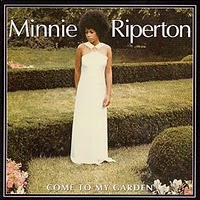 You’ll rarely hear music this magical. Borrowing from soul, orchestral pop and psychedelia in equal measures and seemingly unscathed by commercial considerations, on “Come To My Garden” Minnie follows a more organic, pastoral and ultimately more genre-busting path than during her later, more commercially successful period with Capitol Records. Also, her voice seems more in tune with the arrangements and is generally less affected, putting her often multi-tracked whistle register to chilling use as what sounds like a human woodwind instrument, which is best exemplified on “Completeness”. On the evidence of this utterly delicious recording, Riperton clearly has been a major influence on vocalists such as Kate Bush and Alison Goldfrapp. I’m spellbound and speechless. Listen here. —Michael
You’ll rarely hear music this magical. Borrowing from soul, orchestral pop and psychedelia in equal measures and seemingly unscathed by commercial considerations, on “Come To My Garden” Minnie follows a more organic, pastoral and ultimately more genre-busting path than during her later, more commercially successful period with Capitol Records. Also, her voice seems more in tune with the arrangements and is generally less affected, putting her often multi-tracked whistle register to chilling use as what sounds like a human woodwind instrument, which is best exemplified on “Completeness”. On the evidence of this utterly delicious recording, Riperton clearly has been a major influence on vocalists such as Kate Bush and Alison Goldfrapp. I’m spellbound and speechless. Listen here. —Michael
Album Reviews
Jefferson Airplane “Crown of Creation” (1968)
 By the time “Crown of Creation” came out the Airplane were fully loaded with incredible musicians and an album’s worth of uniquely creative songs. Ranging from their exotic take on alternative lifestyles to the acid crazed end of the world. The instruments, voices and sound experiments expand in an effortless collage of psychedelic consciousness. A collision of modern art and contemporary music that helped to define the hypnotic sixties. –Scott
By the time “Crown of Creation” came out the Airplane were fully loaded with incredible musicians and an album’s worth of uniquely creative songs. Ranging from their exotic take on alternative lifestyles to the acid crazed end of the world. The instruments, voices and sound experiments expand in an effortless collage of psychedelic consciousness. A collision of modern art and contemporary music that helped to define the hypnotic sixties. –Scott
The Beach Boys “Wild Honey” (1967)
 Short, sweet, and playful, this modest collection of effortless pop might not deliver on the promise of Pet Sounds or “Good Vibrations,” but its take on white soul has a sunny, domestic charm to it that’s irresistible, and the unadorned production—sketchy underproduction, in fact—is a great antidote to hermetic studio indulgence and the psychedelic trappings of the day, which makes this, in its own way, a rather bold release for its time. I’m in agreement with the reviewers who put this in the upper ranks of the group’s albums; there are days when I prefer this to Pet Sounds. –Will
Short, sweet, and playful, this modest collection of effortless pop might not deliver on the promise of Pet Sounds or “Good Vibrations,” but its take on white soul has a sunny, domestic charm to it that’s irresistible, and the unadorned production—sketchy underproduction, in fact—is a great antidote to hermetic studio indulgence and the psychedelic trappings of the day, which makes this, in its own way, a rather bold release for its time. I’m in agreement with the reviewers who put this in the upper ranks of the group’s albums; there are days when I prefer this to Pet Sounds. –Will
Miles Davis “Nefertiti” (1968)
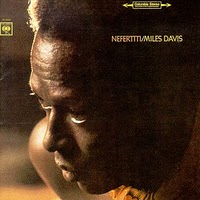 Recorded only a few weeks after Sorcerer, Miles Davis cuts the music even furthur back so often the polished white bone behind the sound is revealed: this gives the music a gleaming purity but also a sense of loss, a lot of that which gives music its emotional meaning has been jetisoned. Herbie Hancock is perhaps the most Milesian of Davis’s piano/keyboard players (perhaps the most Milesian of all Davis’s collaborators): although tempermentally different, lacking Davis’s moody intensity, but having a lightness of touch that Davis lacked, Hancock is the musician who seems most at ease in parring everything back, only playing one note where other musicians would have played five. On this album there are only a couple of tracks where he takes the traditional role in the rhythm section, instead only coming forward, like the horn players, to state the theme at the beginning and end of the number and for his featured section. His playing, as in all the mid-1960s Quintet recordings, shines with an astonishing precision, the sense that each note is fully determined by his conception of the piece, that it is the only possible choice, the only note that could have been played. Tony Williams plays with an astonishing agression (listen to Nefertiti, Hand Jive, Madness): as with Hancock, a good argument could be made that the recordings with the Miles Davis Quintet in the mid-1960s contain his greatest performances. Ron Carter, although impecable, plays with a greater simplicity compared to the Sorcerer sessions (but then his bass on Sorcerer is perhaps the high point of his career) – it could be argued that this is a good thing, but for me it is part of the release of the internal tension that made the previous Quintet studio recordings so remarkable. The opening title track is a fascinating experiment where the two horn players, rather than the rhythm section, provide the basic structure of the piece, repeating the basic melody time after time: while this gives the other three musicians great freedom to operate it also means a complete loss in the playing of Davis and Shorter (who throughout the rest of the album are superb) – and with repeated listenings I personally find it annoying. Compared to the previous studio albums Nefertiti shows a certain loss in its texture, but in hindsight can see it as a fascinating part of Davis’s continual evolution, one that is already pointing to In a Silent Way. –Nick
Recorded only a few weeks after Sorcerer, Miles Davis cuts the music even furthur back so often the polished white bone behind the sound is revealed: this gives the music a gleaming purity but also a sense of loss, a lot of that which gives music its emotional meaning has been jetisoned. Herbie Hancock is perhaps the most Milesian of Davis’s piano/keyboard players (perhaps the most Milesian of all Davis’s collaborators): although tempermentally different, lacking Davis’s moody intensity, but having a lightness of touch that Davis lacked, Hancock is the musician who seems most at ease in parring everything back, only playing one note where other musicians would have played five. On this album there are only a couple of tracks where he takes the traditional role in the rhythm section, instead only coming forward, like the horn players, to state the theme at the beginning and end of the number and for his featured section. His playing, as in all the mid-1960s Quintet recordings, shines with an astonishing precision, the sense that each note is fully determined by his conception of the piece, that it is the only possible choice, the only note that could have been played. Tony Williams plays with an astonishing agression (listen to Nefertiti, Hand Jive, Madness): as with Hancock, a good argument could be made that the recordings with the Miles Davis Quintet in the mid-1960s contain his greatest performances. Ron Carter, although impecable, plays with a greater simplicity compared to the Sorcerer sessions (but then his bass on Sorcerer is perhaps the high point of his career) – it could be argued that this is a good thing, but for me it is part of the release of the internal tension that made the previous Quintet studio recordings so remarkable. The opening title track is a fascinating experiment where the two horn players, rather than the rhythm section, provide the basic structure of the piece, repeating the basic melody time after time: while this gives the other three musicians great freedom to operate it also means a complete loss in the playing of Davis and Shorter (who throughout the rest of the album are superb) – and with repeated listenings I personally find it annoying. Compared to the previous studio albums Nefertiti shows a certain loss in its texture, but in hindsight can see it as a fascinating part of Davis’s continual evolution, one that is already pointing to In a Silent Way. –Nick
13th Floor Elevators “Easter Everywhere” (1967)
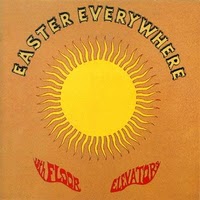 If all psychedelic records where this good I’d listen to nothing else. As we all know there not. Side one is flawless with even the Dylan cover (“Baby Blue”) being mind expandingly good. Side two’s almost as good and that alone is an incredible feat. One of my favorite 60’s albums of all time and my favorite psych album period. –Brian
If all psychedelic records where this good I’d listen to nothing else. As we all know there not. Side one is flawless with even the Dylan cover (“Baby Blue”) being mind expandingly good. Side two’s almost as good and that alone is an incredible feat. One of my favorite 60’s albums of all time and my favorite psych album period. –Brian
Soft Machine “Third” (1970)
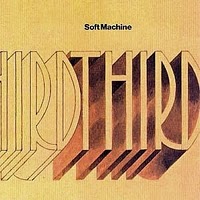 A dark, soupy jazz-fusion concoction, Third sheds away Soft Machine’s psychedelic skin in favor of four side-long monstrosities that stumble across the landscape like a disoriented and angry mammoth, spitting forth an archaic language and swinging drunken fists. Opener “Facelift” features the sounds of this electronic beast slowly awakening to the sounds of some prehistoric ritual, while side two offers the floating jazz-rock haze of “Slightly All the Time.” The only vocal track, “The Moon in June,” flows in a stream of consciousness both lyrically and musically, alternating confusion with moments of clarity, and it’s the best track here. “Out-Bloody-Rageous” closes with cues to Terry Reilly in a cascade of synths set up against more medieval jazz noodlery. While Third gets the job done, it takes too long to do it, and can be recommended only to those with the time and patience to decode its puzzling utterances. –Ben
A dark, soupy jazz-fusion concoction, Third sheds away Soft Machine’s psychedelic skin in favor of four side-long monstrosities that stumble across the landscape like a disoriented and angry mammoth, spitting forth an archaic language and swinging drunken fists. Opener “Facelift” features the sounds of this electronic beast slowly awakening to the sounds of some prehistoric ritual, while side two offers the floating jazz-rock haze of “Slightly All the Time.” The only vocal track, “The Moon in June,” flows in a stream of consciousness both lyrically and musically, alternating confusion with moments of clarity, and it’s the best track here. “Out-Bloody-Rageous” closes with cues to Terry Reilly in a cascade of synths set up against more medieval jazz noodlery. While Third gets the job done, it takes too long to do it, and can be recommended only to those with the time and patience to decode its puzzling utterances. –Ben
Alice Cooper “Love It to Death” (1971)
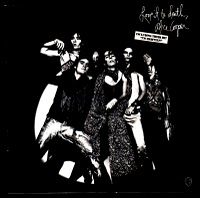 Love it to Death is the perfect brew of the Alice Cooper band’s mixture of hard rock, juvenile delinquency and shock rock theatrics. A lot of its strength relies in its diversity and the band always manages to sound convincing and original. Just look at the final three songs: the dark “Second Coming” plays out with a grand, stirring piano section into the unnerving lunacy of “The Ballad of Dwight Fry” before ending with the folky sing-a-long “Sun Arise”. “Caught in a Dream” and “Long Way To Go” are effective, short garage rockers that contrast with the extended, intense psychedelic trip of “Black Juju”. “I’m Eighteen” has simple lyrics that perfectly capture the confusion and disarray of adolescence and “Is It My Body” is a short, lusty rocker with a great guitar tone. “Hallowed be thy Name” is the weaker of the bunch, but it doesn’t really detract from the album as a whole and “Love it to Death” is a first rate seventies hard rock album. –Ben
Love it to Death is the perfect brew of the Alice Cooper band’s mixture of hard rock, juvenile delinquency and shock rock theatrics. A lot of its strength relies in its diversity and the band always manages to sound convincing and original. Just look at the final three songs: the dark “Second Coming” plays out with a grand, stirring piano section into the unnerving lunacy of “The Ballad of Dwight Fry” before ending with the folky sing-a-long “Sun Arise”. “Caught in a Dream” and “Long Way To Go” are effective, short garage rockers that contrast with the extended, intense psychedelic trip of “Black Juju”. “I’m Eighteen” has simple lyrics that perfectly capture the confusion and disarray of adolescence and “Is It My Body” is a short, lusty rocker with a great guitar tone. “Hallowed be thy Name” is the weaker of the bunch, but it doesn’t really detract from the album as a whole and “Love it to Death” is a first rate seventies hard rock album. –Ben
Don Ellis “Don Ellis at Fillmore” (1970)
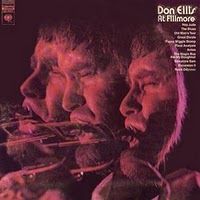 Don Ellis at Fillmore will satisfy even the most intense and discerning cravings that people might have to hear more music like Frank Zappa’s The Grand Wazoo and Waka/Jawaka. Ellis explores all things quirky with his Jazz ensemble. There’s solos galore. Many of the songs are lengthy. There’s comedic thrills. They go so far as to inject “Hey Jude” with a syringe of heroine and steroids. The room may be spinning but Jude could still kick your ass. The audience gets messed with severely. Pretty much every Zappa fan should own this music. Ellis was probably one of the main people that influenced Zappa to make the move from his early phase (Freak Out! to Uncle Meat) into trying something like Hot Rats all of the sudden. A copy of Don Ellis at Fillmore surely must have been on the Zappa tour bus. –Rob
Don Ellis at Fillmore will satisfy even the most intense and discerning cravings that people might have to hear more music like Frank Zappa’s The Grand Wazoo and Waka/Jawaka. Ellis explores all things quirky with his Jazz ensemble. There’s solos galore. Many of the songs are lengthy. There’s comedic thrills. They go so far as to inject “Hey Jude” with a syringe of heroine and steroids. The room may be spinning but Jude could still kick your ass. The audience gets messed with severely. Pretty much every Zappa fan should own this music. Ellis was probably one of the main people that influenced Zappa to make the move from his early phase (Freak Out! to Uncle Meat) into trying something like Hot Rats all of the sudden. A copy of Don Ellis at Fillmore surely must have been on the Zappa tour bus. –Rob
Maxophone “Maxophone” (1975)
 The lone album from Maxophone is another piece of archaeological evidence pointing towards the inevitable conclusion that the Italians took progressive rock to heights only hinted at by their UK contemporaries. While richly melodic, Maxophone nevertheless are as go-for-broke with their ornamented arrangements as any other Italian prog act, regularly spouting riffs offering more twists than a bowl of fusilli, bursting into flowery orchestral beauty, or detouring down a jazzy sax-mad side road at the drop of a hat. The layered vocals are delivered with the inspired passion that hallmarks the genre, also managing to hit some angelic falsettos along the way. –Ben
The lone album from Maxophone is another piece of archaeological evidence pointing towards the inevitable conclusion that the Italians took progressive rock to heights only hinted at by their UK contemporaries. While richly melodic, Maxophone nevertheless are as go-for-broke with their ornamented arrangements as any other Italian prog act, regularly spouting riffs offering more twists than a bowl of fusilli, bursting into flowery orchestral beauty, or detouring down a jazzy sax-mad side road at the drop of a hat. The layered vocals are delivered with the inspired passion that hallmarks the genre, also managing to hit some angelic falsettos along the way. –Ben
Fleetwood Mac “Then Play On” (1969)
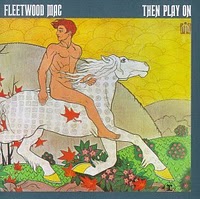 If I was forced to name a favorite album, then I think I might go for “Then Play On”. I can’t really think of another album I consistently enjoy as much. With Danny Kirwan on board the expectation no longer falls squarely on Peter Green’s shoulders and Kirwan’s arrival had already bore fruit with the preceeding “Albatross” and “Man of the World” singles. There’s a much broader feel on here than the previous Fleetwood Mac albums and “Then Play On” includes everything you could want on an album: soul-searching ballads (“Closing My Eyes”, “Before the Beginning”), raucous rock ‘n’ roll (“Coming Your Way”, “Rattlesnake Shake”, “Oh Well (Part One)”), McCartney-esque pop ditties (“Although the Sun is Shining”, “When You Say”), serene instrumentals (“My Dream”, “Underway”, “Oh Well (Part Two)”) and breathtaking jams (“Looking for Madge”, “Fighting for Madge”). Listening to “Then Play On” is particularly interesting when you consider how troubled the chief song writers would become in the ensuing months, years and decades. You can almost sense something ominous on Peter Green’s horizon when listening to “Closing My Eyes”, “Show-Biz Blues” (which includes the line “and you’re sitting there so green, believe me man I’m just the same as you), the acoustic section of “Oh Well” or “Before the Beginning”. There’s something incredibly sad about Peter Green’s contributions here although he still gets down and dirty for “Rattlesnake Shake”, an ode to masterbation. Danny Kirwan proves himself to be a phenomenal song writer with his delicate, beautiful ballads and his album opener “Coming your Way” has an epic guitar outro. There isn’t one dud to be found here and “Then Play On” is never anything less than an engrossing, moving, imaginative, flawless, impressive album from a band who may not have even hit there peak yet. –Tom
If I was forced to name a favorite album, then I think I might go for “Then Play On”. I can’t really think of another album I consistently enjoy as much. With Danny Kirwan on board the expectation no longer falls squarely on Peter Green’s shoulders and Kirwan’s arrival had already bore fruit with the preceeding “Albatross” and “Man of the World” singles. There’s a much broader feel on here than the previous Fleetwood Mac albums and “Then Play On” includes everything you could want on an album: soul-searching ballads (“Closing My Eyes”, “Before the Beginning”), raucous rock ‘n’ roll (“Coming Your Way”, “Rattlesnake Shake”, “Oh Well (Part One)”), McCartney-esque pop ditties (“Although the Sun is Shining”, “When You Say”), serene instrumentals (“My Dream”, “Underway”, “Oh Well (Part Two)”) and breathtaking jams (“Looking for Madge”, “Fighting for Madge”). Listening to “Then Play On” is particularly interesting when you consider how troubled the chief song writers would become in the ensuing months, years and decades. You can almost sense something ominous on Peter Green’s horizon when listening to “Closing My Eyes”, “Show-Biz Blues” (which includes the line “and you’re sitting there so green, believe me man I’m just the same as you), the acoustic section of “Oh Well” or “Before the Beginning”. There’s something incredibly sad about Peter Green’s contributions here although he still gets down and dirty for “Rattlesnake Shake”, an ode to masterbation. Danny Kirwan proves himself to be a phenomenal song writer with his delicate, beautiful ballads and his album opener “Coming your Way” has an epic guitar outro. There isn’t one dud to be found here and “Then Play On” is never anything less than an engrossing, moving, imaginative, flawless, impressive album from a band who may not have even hit there peak yet. –Tom
Black Oak Arkansas “High on the Hog” (1973)
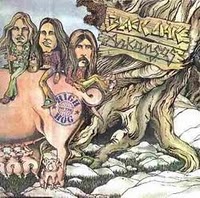 Clodhoppin’ rockers Black Oak Arkansas achieved their biggest success with High on the Hog and it’s obnoxious #25 single “Jim Dandy,” which featured raspy vocalist Jim “Dandy” Mangrum and Ruby Starr hootin’ it up like a pair of courtin’ cousins. Featuring a few other, similarly buck-toothed entries in “Happy Hooker,” and acoustic pickers “Back to the Land” and “High ‘n’ Dry,” High on the Hog is redeemed by the inclusion of nasty southern-livin’ rockers like the funky opener “Swimmin’ in Quicksand,” the churning “Red Hot Lovin’,” and “Mad Man,” while “Moonshine Sonata” is a vintage guitarmony laced instrumental. Possessing neither the sophistication of an Allmans or attitude of Skynrd, High on the Hog is yer basic roll in the mud through a set of lowbrow rube-rock, worth checking out for fans of the genre. –Ben
Clodhoppin’ rockers Black Oak Arkansas achieved their biggest success with High on the Hog and it’s obnoxious #25 single “Jim Dandy,” which featured raspy vocalist Jim “Dandy” Mangrum and Ruby Starr hootin’ it up like a pair of courtin’ cousins. Featuring a few other, similarly buck-toothed entries in “Happy Hooker,” and acoustic pickers “Back to the Land” and “High ‘n’ Dry,” High on the Hog is redeemed by the inclusion of nasty southern-livin’ rockers like the funky opener “Swimmin’ in Quicksand,” the churning “Red Hot Lovin’,” and “Mad Man,” while “Moonshine Sonata” is a vintage guitarmony laced instrumental. Possessing neither the sophistication of an Allmans or attitude of Skynrd, High on the Hog is yer basic roll in the mud through a set of lowbrow rube-rock, worth checking out for fans of the genre. –Ben
Eddie Harris “Is It In” (1974)
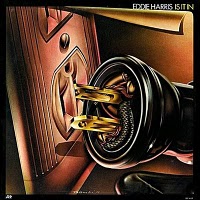 If you dig funk, two words: “Funkaroma” and “Is it In.” (Okay, that’s four words.) “Funkaroma” kicks off the album with Eddie and his plugged in tenor going off on this sixty second intro that just oozes with funky soul. At the one minute mark the band kicks in and funk perfection ensues with everybody firmly on the one. The title track is perfectly realized funk from :01. Guitarist Ronnie Muldrow lays it on thick with this breakneck riff and the band does the rest with Eddie wailing along, electrified, over the top. The drum chant “It’s War” and gooey “Space Commercial” could both easily fit on a 70’s funky Bruton Sound Library LP. Although most of Eddie’s albums from this period are uneven in overall mood and performance (this one is no different), Eddie, his electric sax, and a group of accomplished stateside jam-hounds give funk true meaning with these songs. –A
If you dig funk, two words: “Funkaroma” and “Is it In.” (Okay, that’s four words.) “Funkaroma” kicks off the album with Eddie and his plugged in tenor going off on this sixty second intro that just oozes with funky soul. At the one minute mark the band kicks in and funk perfection ensues with everybody firmly on the one. The title track is perfectly realized funk from :01. Guitarist Ronnie Muldrow lays it on thick with this breakneck riff and the band does the rest with Eddie wailing along, electrified, over the top. The drum chant “It’s War” and gooey “Space Commercial” could both easily fit on a 70’s funky Bruton Sound Library LP. Although most of Eddie’s albums from this period are uneven in overall mood and performance (this one is no different), Eddie, his electric sax, and a group of accomplished stateside jam-hounds give funk true meaning with these songs. –A


